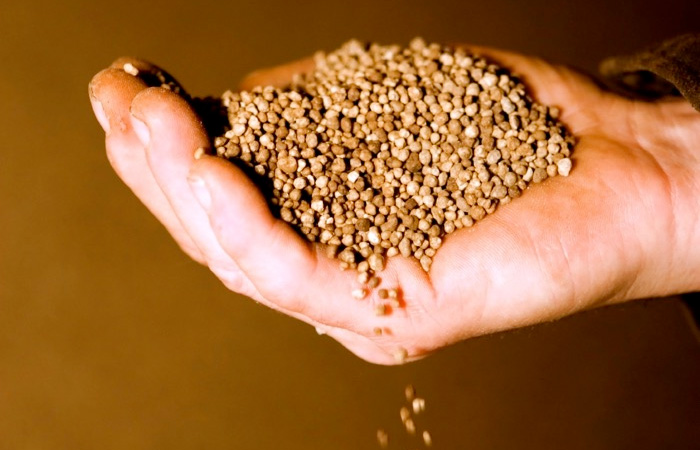The Climate change discussion surrounds us. This is true whether you believe the Climate is changing or not. The discussion envelopes whether we believe that Climate Change is the result of human activity or natural climate cycles. Similarly the discussion of what to do with our fossil fuel deposits is unavoidable, regardless of your attitude toward fossil fuel use. These two discussions dominate. It seems at times there is not enough oxygen left for other discussions, yet there are other resource issues we need to talk about if we wish to live responsibly and sustainably.
My attention was again drawn to importance of phosphate (P) last week when I tuned in to an online seminar of work being done at the U of M with struvite, a formulation of P.
Farmers have known for hundreds of years that crops respond to manure, and scientists have known almost as long that one of the most significant elements in manure is P. Much more recently, we have also come to know that excessive P can also be a problem, manifest most obviously in algae blooms in Lake Winnipeg and Lake Eire.
Nature, left on its own, functions in cycles – the water cycle, the carbon cycle, the nitrogen cycle, the phosphate cycle. Humans, particularly industrialized humans, prefer straight lines. In nature, plants draw the P essential to their life from the soil. Of the plant biomass generated as these plants grow, some of it will return to the soil as the plant dies at the end of its growing season. Some of the plant biomass will be consumed by animals, including humans.
In nature, animals defecate and die not far from where the plants they have eaten grew, so as these animals complete their life cycle, the P cycle is not disturbed, but as we introduce humans and their domesticated animals, things change. The P is transported, and it becomes concentrated in areas of high human density and deficient in areas of low human density.
Farmers today, with a concentration of livestock, have an excess of P. They need to get this onto land that is deficient in P, which, on the whole, they do well. Urban areas have a greater challenge. The bigger, the more concentrated the urban area, the bigger the challenge becomes. Steinbach has a challenge getting the P out of its lagoon and getting that P onto agricultural land where it is needed. But Steinbach’s challenge is small compared to the challenge for the City of Winnipeg, and Winnipeg’s challenge is small compared to the challenge faced by the truly big cities like New York.
What do we do about this? What’s to be done about this? We resort to mining P. On the whole, Canada is well endowed with mine-able deposits of most rocks. This is, however, not true of P deposits. Most of the mineral P used by Canadian farmers is imported.
Ideally, if we want to live sustainably, we need to separate organic waste from other waste at source, so the organic waste, with its P can replace the P being removed from cropped fields to feed the cities. But that’s not the way waste management if set up in our cities. Everything gets flushed down the same toilet.
This is where struvite comes in. As we better understand what’s possible with struvite, it becomes possible to capture some of the waste P in the form of struvite, concentrate this plant nutrient and return it to agricultural use. The researchers at the U of M are to be commended for the work they are doing.




